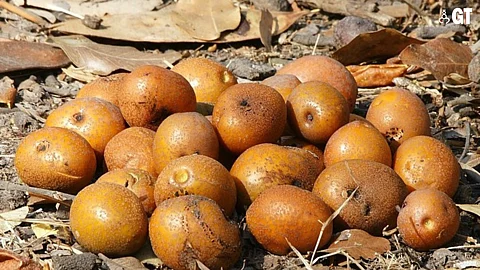

Old-timers in Goa rave about a fruit that looks like an undersized ambaddo or hog plum, and is sold at the fair during the Three Kings feast at Cuelim village, near Cansaulim.
Since this feast is on a fixed date in January, it is difficult to mistake the harvesting season of this fruit. Yet, there are people who hope to see it at the Konkan Fruit Fest held in late April or early May.
Its botanical name sounds interesting to anyone who knows Hindi: the genus is Parinari (Pari = Fairy, Nari = Woman) and specifically the Mobola Plum of equatorial Africa is Parinari curatellifolia.
Locally, it is known as mattoma, and once grew in large numbers on the hillsides south of the river Zuari, near Cortalim.
LOCATION, SPECS
The mattoma plant can grow in poor soils and can withstand water-logging for months. It is also fire-resistant and will be good vegetation for fire-prone areas.
It is an evergreen, medium to large tree, about 10 m in height. In areas with high rainfall like Goa, the tree grows to its greatest size of about 20 m (70 feet) height with a crown around 20 m across.
Taking a closer look, its trunk has an unmistakable fissured bark. It is a spreading tree that is striking because of its almost mushroom-shaped canopy in the grasslands of Africa.
There were many mattoma trees growing in Quelossim village which was once a part of Cortalim village panchayat, and now is being gobbled by the ever-expanding Verna Industrial Estate of GIDC.
The plant may have been brought by expatriate Goans from British East Africa (Kenya, Uganda, and Tanzania) or those from Portuguese East Africa (Angola and Mocambique).
The botanical name was identified for me by a post graduate student of Botany, Diksha Gaunker, and confirmed later by Prof MK Janarthanam, a well-known taxonomist based in Goa.
The tree is valued because of its delicious fruit, which appears early in the post-monsoon season and can be harvested for about three months from December to February. It is a fruit that must be peeled and eaten like a litchee or rambutan.
It looks and tastes quite different from the other fruits. The edible fruit is very popular in the areas where it grows, especially among children.
The fruit pulp is relished by those who have been fortunate enough to eat the fruit. The crushed pulp of the fruit is an ingredient in drinks and, since it ferments well, is often used to make alcoholic drinks in its native Africa.
Its kernel has about 70% oil content. The oil is edible and is extracted as in kokum (Garcinia indica) seed oil, by crushing the dried seeds, putting them in boiling water and skimming the oil when it cools down.
The leaves are ground to a paste and used as poultice for fractures and dislocation of bones.
Mattoma may well be a tree of the future due to global warming and increasing number of cyclonic floods and fire incidents. Christmas to Carnival is the time to enjoy these fruits and sow the seeds for the future.
The author is the former Chairman of the GCCI Agriculture Committee, CEO of Planter's Choice Pvt Ltd, Additional Director of OFAI and Garden Superintendent of Goa University, and has edited 18 books for Goa & Konkan